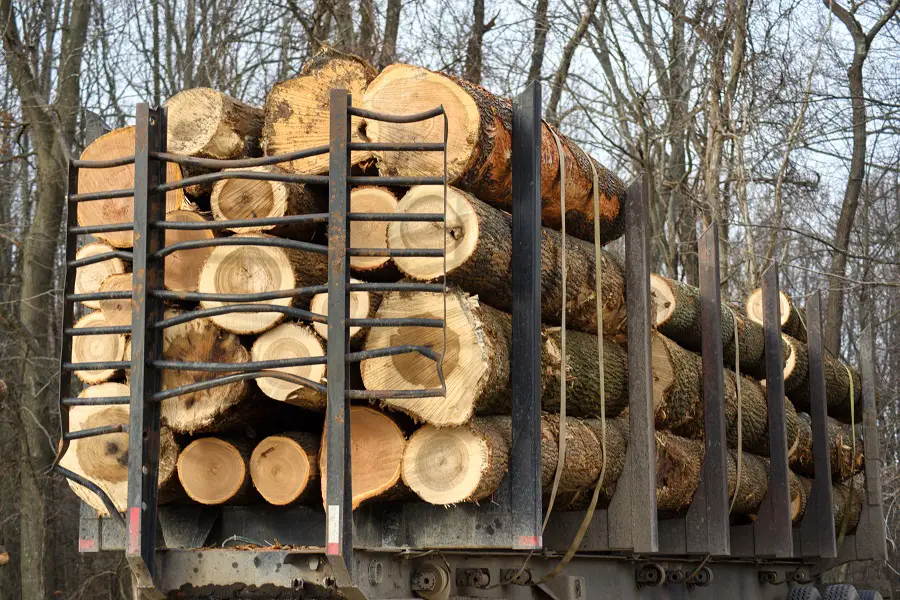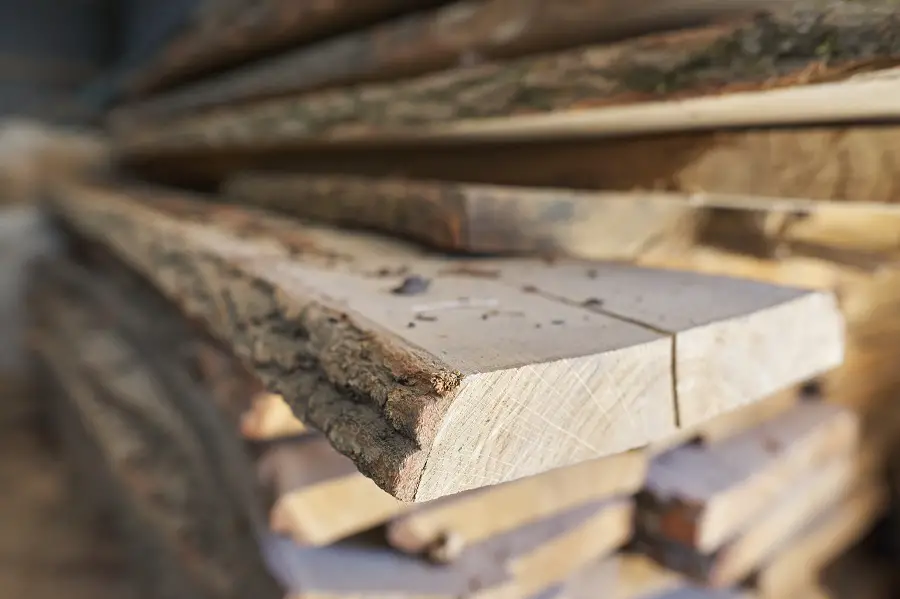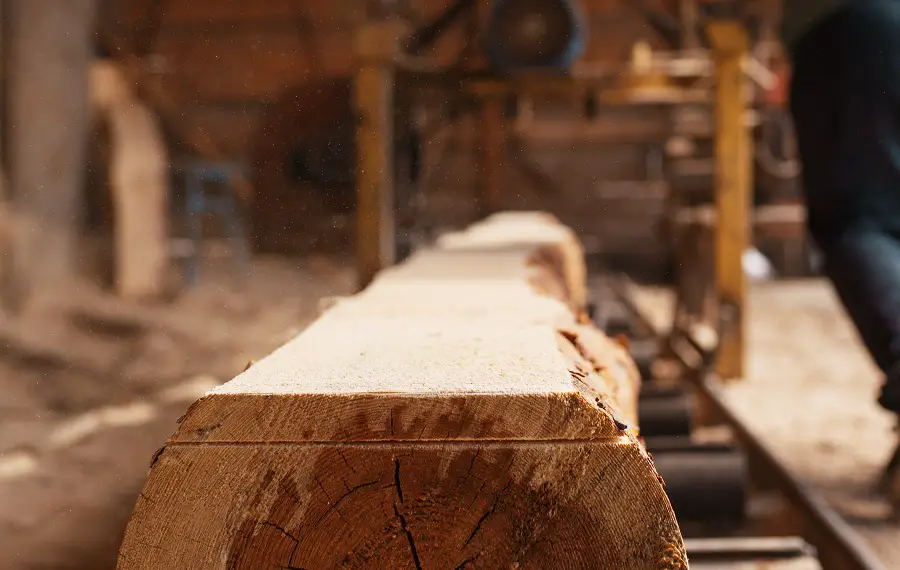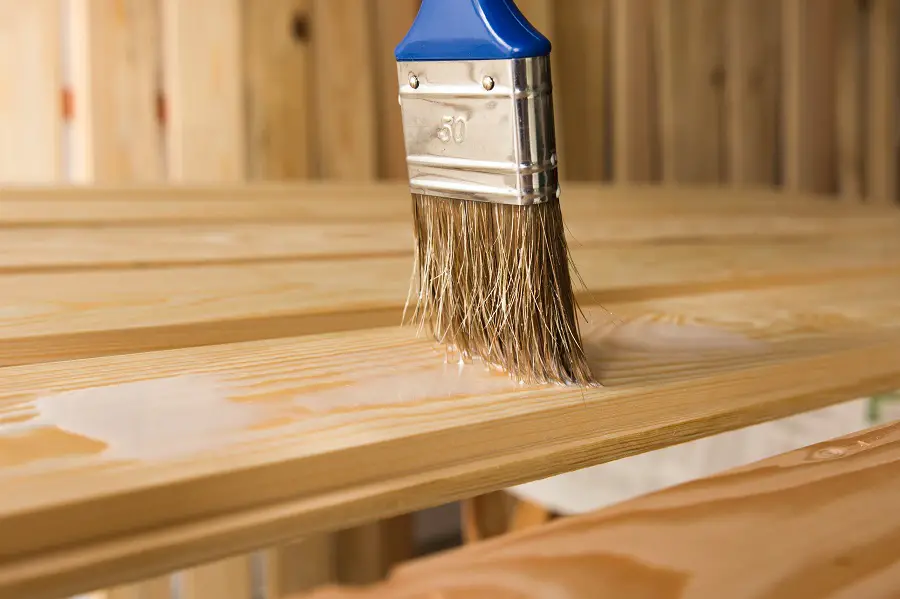It is a known fact that wood has a tendency to crack during drying. This is due to the natural outflow of water, especially through the cross-section where the fiber ends are located. To limit cracking, the area must be protected. Facebook post by article on drying walnut wood has given us the opportunity to learn some original ways to protect the fiber head area. We found some of them interesting and think they would be appreciated by those who have to dry cut trees in their own yard or who have bought whole trunks. You will discover them in the article below, along with other information on wood splitting and a professional way to protect wood during the drying, storage and/or transportation processes.

Why cracks appear at the ends of logs, planks or cupboards
Cracks mainly occur at the ends of logs, cabinets or planks and lead to wood loss. The cause of cracking is the rapid outflow of water, which causes high stresses inside the wood. Drying to equilibrium moisture is a natural process that starts as soon as the tree has been felled. Most of the water escapes through the grain ends, the area subject to the greatest stresses.
Wood cracks because the bond between fibers is broken or anatomical elements break. Cracking occurs in the longitudinal direction and has several causes: growth defects, growth stresses, drying out, dimensional variation due to moisture exchange with the environment, cutting mistakes, wrong construction solutions. For more information on the most common cracks that occur as growth defects - gelivura and rolla - see here, and about swelling and shrinkage, i.e. the dimensional variation of wood due to air humidity, we have written extensively here.
Wood must be dried before being used in construction or furniture making
It is mandatory to dry the wood before using it for furniture, musical instruments, decorative elements or construction. In relation to the relative humidity of the air in this geographical area, the humidity of wood in Romania must be 8-12% for indoors and 12-16% for outdoors. There are also exceptions, such as wood used for the manufacture of resonance musical instruments, the humidity of which must be 5-7%, or wood for the manufacture of barrels, the normal humidity of which is 18-20%.
Wood must be dried before use to be safe to use. Excess water will cause it to lose water uncontrollably until it reaches equilibrium which will lead to internal stresses. The result will be warping and cracking in the wood, i.e. compromising the project for which it was used. High humidity also reduces the properties of wood and makes it vulnerable to attack by insects and fungi that can cause it to rot. Wood drying and moisture balance are important issues to understand and respect.

Recommendations from carpenters or woodworkers
At the article posted on the well-known social network, in addition to many warnings not to cut the walnut without approval from the County Agricultural Department 🙂 I also found a number of recommendations to limit the occurrence of cracks at the ends of logs and solid wood elements. Below are some of the suggestions, some quite ingenious:
- Several successive layers of aracite and newspaper on the ends of the dry logs.
- The log beat the ends with a sledgehammer until flaky, then apply a coat of glue. Then apply metal bracelets on the ends. Bracelets should be made so that they can be moved or removed when needed.
- Application of a layer of earth used to build stoves on the end of the log.
- Var stins on the ends or even all over the plank.
- Aracite, wax, paraffin or thick coat of paint in the area of fiber ends.
- Metal Ss fixed to the ends of the logs.
- Log cutting to reduce tension.
- Water dailyin the morning and cover with dark foil.
- Drying logs in hay.
- Grease the end of the log with cow dung.
Among the suggestions we found was the recommendation to use burned motor oil. We do NOT recommend this because of the toxicity of the product itself. Nor is the use of oil in general not recommended because the purpose is to prevent water from escaping quickly, and oil does not do this, it does not clog fibers. The oil prevents water from entering and helps to drain it away in the event of rain, but does nothing to control the outflow of the water contained in the wood.

What professional solution that prevents wood cracking at the ends of the grain is there?
The solutions recommended above can be used for drying walnut trees cut from your own yard or other home-cut trees. When it comes to drying large quantities of wood, long-term storage or long-distance transportation, professional solutions that are easy to apply, remove without trace and offer a guarantee are needed. Such a solution is TISZAWAX paraffin emulsion from the Szolvegy. The Târgu Mureș-based company, known in particular for its TISZABOND brand of wood adhesives, aracet adhesives, also offers this product for protecting wood.
TISZAWAX paraffin emulsion is an aqueous solution used for the protection of wood in professional dryers, wood stored for a longer period of time or wood being transported by land or sea. The solution forms a paraffin film on the surface of the wood, which causes uniform evaporation of water from the wood mass. It is liquid and is therefore easily applied to the ends of logs and solid wood elements. It can be applied by brush, roller or spray gun. The solution has a milky white appearance, but can be colored on customer's request. Consumption when sprayed is 0.7 kg/m².

TISZAWAX liquid paraffin can be used to protect log ends, sawn timber, beams and other solid wood semi-finished products. The protection greatly reduces cracking and thus wood loss. It is an effective solution, protecting even hard, dense wood such as oak or beech. It can also be used to protect veneer logs or other high quality semi-finished products as it does not alter their final appearance.
I hope you find the above information interesting. If you have also used original solutions to limit wood splitting, we would love to hear from you. And if you have any questions or queries, please leave them below in the space provided. I'll be sure to reply.



































Doesn't Glass Water give good results when isolating log ends?
I've never found glass water mentioned for such protection.
I don't think it would be useful because glass water is used for protection against moisture absorption and insect attack. It also strengthens weathered wood. I don't think it would be a solution to control water coming out of the wood.